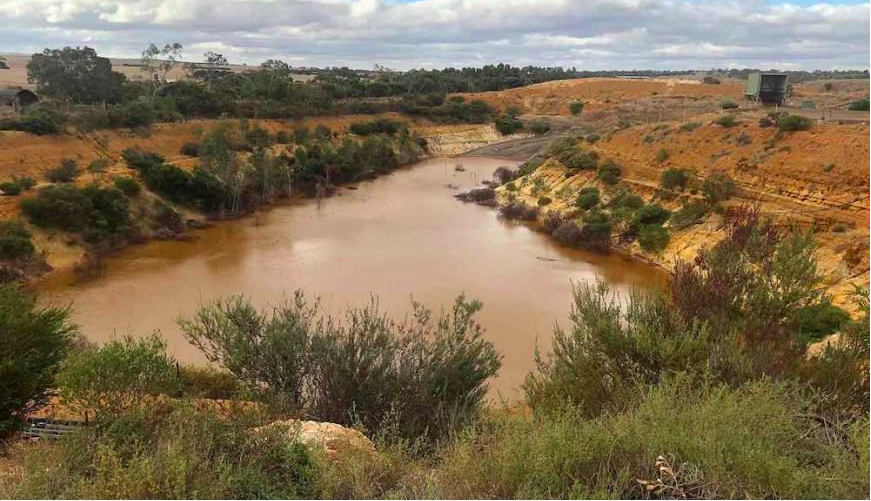Having closed US$37 million (AU$54,6 million) in growth financing, Hydrostor stands ready to advance its plans to deliver Australia’s first advanced compressed air energy storage (A-CAES) facility. The a 5 MW/10 MWh project in South Australia will store excess solar and wind power at a closed underground mine, converting a brownfield site into a clean energy hub.
The Canadian developer expects to use the financing to complete construction of its Angas Project in SA, as well as to advance its pipeline of large-scale A-CAES projects as it seeks to expand its global footprint. Those projects represent over 2 GW and 16 GWh of deployment potential in the U.S., Canada, Chile and Australia, the company said in a release.
“Hydrostor’s A-CAES is well positioned to capitalize on the growing demand for flexibly-sited, long-duration energy storage as power grids continue to decarbonize and adapt to higher penetrations of intermittent renewable energy,” said Hydrostor CEO, Curtis VanWalleghem.
The funding announcement comes on the heels of recent milestones associated with the Angas A-CAES Project. After it was unveiled in February in the commercial demonstration phase, the project received development approval from the South Australian government in July and started construction. The development received $3 million in funding through the South Australian Government’s Renewable Technology Fund and $6 million in funding from the Australian Renewable Energy Agency (ARENA).
The Angas fuel-free battery will use electricity from the grid to run a compressor and produce heated, compressed air that can be stored 240 metres underground in a purpose-built cavern and kept at constant pressure using hydrostatic head from a water column.
During charging, heat from the compressed air is collected and stored before the cooled air displaces water out of the cavern up to a water reservoir on the surface. To discharge, water flows back into the cavern forcing air to the surface under pressure where it is heated with the stored thermal energy and drives a turbine to generate electricity when demand in the electricity grid is high.
The A-CAES has similar applications to pumped hydro, which works by pumping water up-hill when demand is low and then releasing it down pipes through a turbine to generate electricity when demand is high. It can provide the dispatchability required to ensure reliability of the power system as more solar and wind power is installed.
“Compressed air storage has the potential to provide similar benefits to pumped hydro energy storage, however it has the added benefits of being flexible with location and topography, such as utilizing a cavern already created at a disused mine site,” ARENA CEO Darren Miller said earlier, adding the project could open up a new form of renewable energy storage in Australia.
According to the company’s latest release, Australia could be in line for more A-CAES projects. Hydrostor has already set up an office in Adelaide as a result of the Angas project, which is expected to provide around 40 jobs during construction and a further four ongoing positions over its 30 year lifespan. Aside from the SA project, the company’s other commercial reference system is the Goderich A-CAES Facility in Ontario, Canada, which is contracted to the province’s grid operator, IESO, and expected to be operational in the next month.
Along with the funding, Hydrostor announced new strategic partnerships with infrastructure investor Meridiam and oilfield services company Baker Hughes. Meridiam will support the origination and development of Hydrostor projects, while Baker Hughes will supply electric motor compressor and turbine generator solutions.
Renewable energy developer and independent power producer Elemental Energy participated in the fundraising. Hydrostor also received additional funding from existing investors including Canoe Financial, ArcTern Ventures, MaRS Catalyst Fund and Lorem Partners. The financing included a combination of equity, debt, project development and cash commitments, and an asset acquisition.
This content is protected by copyright and may not be reused. If you want to cooperate with us and would like to reuse some of our content, please contact: editors@pv-magazine.com.









1 comment
By submitting this form you agree to pv magazine using your data for the purposes of publishing your comment.
Your personal data will only be disclosed or otherwise transmitted to third parties for the purposes of spam filtering or if this is necessary for technical maintenance of the website. Any other transfer to third parties will not take place unless this is justified on the basis of applicable data protection regulations or if pv magazine is legally obliged to do so.
You may revoke this consent at any time with effect for the future, in which case your personal data will be deleted immediately. Otherwise, your data will be deleted if pv magazine has processed your request or the purpose of data storage is fulfilled.
Further information on data privacy can be found in our Data Protection Policy.